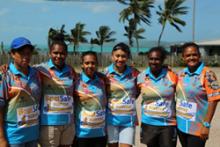The Torres Strait stretches 150 kilometres from the tip of Cape York Peninsula in North Queensland to the south-west coast of Papua New Guinea (PNG).
Islands, reefs, and coral sand cays are scattered throughout the region. The northern most island is within five kilometres of the PNG coastline.
The region includes 18 island communities, with populations ranging from 55 to over 1600, and also two mainland communities.
The islands are scattered over a geographic area of 48,000 square kilometres. The region’s total population is about 8300, of which more than 6100 are Torres Strait Islander and Aboriginal people.
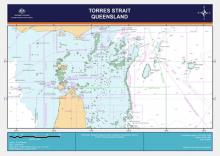
The regional reliance on seaborne transport in small open boats over long distances of open ocean was resulting in very high search and rescue incidents.
The Torres Strait Marine Safety Program (TSMSP) began in 2006 as a joint initiative of organisations including us, Maritime Safety Queensland (MSQ) and the Torres Strait Regional Authority (TSRA).
The Queensland Police Service (QPS) and National Maritime Safety Authority (NMSA) of PNG became program partners in later years.
The project began after it was found Torres Strait Islanders had a one in 12 chance of being involved in a marine incident, while Queenslanders more generally had a one in 3300 chance.
Today, Torres Strait Islanders have a far smaller chance of being involved in a marine incident as they are more aware and prepared for the possible dangers.
TSMSP Steering Committee
The TSMSP Steering Committee provides a management structure and funding arrangements to address priority actions within the Torres Strait Marine Safety Strategy.
The programs primary focus is:
- improving and promoting boating safety in the Torres Strait
- reducing the number of SAR operations in the area
- increasing the survivability of persons lost at sea
- supporting development of the near coastal maritime industry in the region.
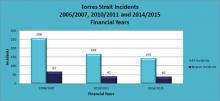
Current priorities
Boating safety education
The TSMSP team deliver a range of boating safety education programs throughout the Torres Strait region and support the delivery of the BoatSafe program to high school students.
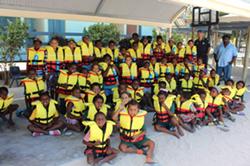 Maritime Safety Education Workshop at Warraber Island
Maritime Safety Education Workshop at Warraber Island
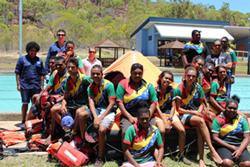 Senior students from the Northern Peninsula Area College undertaking Shipboard Safety Skill Set training
Senior students from the Northern Peninsula Area College undertaking Shipboard Safety Skill Set training
Maritime safety education workshops have been delivered to each of the 23 school campuses throughout the Torres Strait region.
Almost 3000 properly fitting lifejackets have been distributed and marine safety equipment educational kits provided to each campus for ongoing maritime safety education and broader curriculum support.
Students from Thursday Island and Northern Peninsula Area Colleges receive BoatSafe training so graduating students leave school with a recreational marine drivers licence and other maritime safety skills and qualifications.
Managing a safety grab bag scheme and 406MHz EPIRB replacement program
The TSMSP team manage a safety grab bag scheme and 406MHz EPIRB replacement program to make essential life-saving equipment available to community members travelling by vessels in the region.
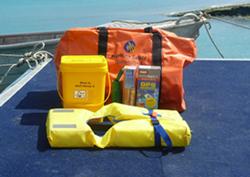 Safety Grab Bags available to recreational boats
Safety Grab Bags available to recreational boats
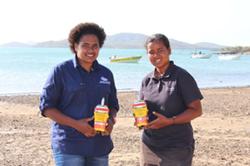 Shanice Havili and Tanya Takai-Bowie promoting the 406MHz EPIRB
Shanice Havili and Tanya Takai-Bowie promoting the 406MHz EPIRB
A lack of appropriate safety equipment in good condition was found to be a common problem during vessel inspections and marine incident investigations. Thirty-eight bags are available for short term borrowing from police throughout the region without charge to the user.
406MHz EPIRBs are an essential piece of life saving equipment for all offshore voyages. They have saved the lives of thousands of people around the world including many lives in the Torres Strait.
Liaising with communities and developing and implementing a media, marketing and communication strategy
A crucial element of the TSMSP is engagement with traditional owners, community representatives and industry leaders, to discuss current and emerging maritime safety issues.
This includes working with the PNG NMSA to deliver TSMSP boating safety education to those villages in the western province subject to the Torres Strait Treaty.
From this engagement and consultation, an intensive media, marketing and communications strategy is maintained through various forums including:
- radio
- print and online media
- press advertising
- sponsorship of and attendance at major community events throughout the year targeting specific seasonal and cultural activities.
Up to 1500 people can attend these events with many travelling by small vessels to do so.
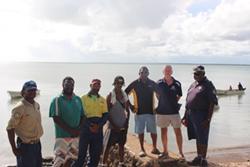 Attendees following a Maritime Safety Workshop at Saibai Island with various stakeholders
Attendees following a Maritime Safety Workshop at Saibai Island with various stakeholders
